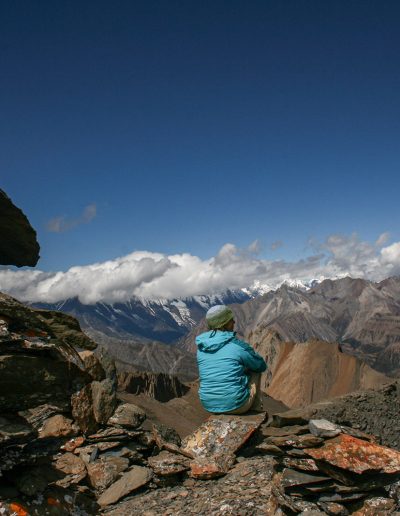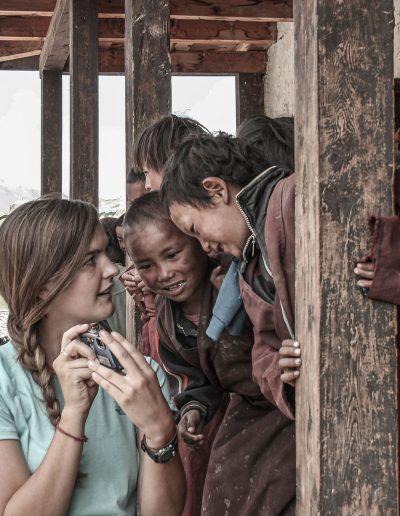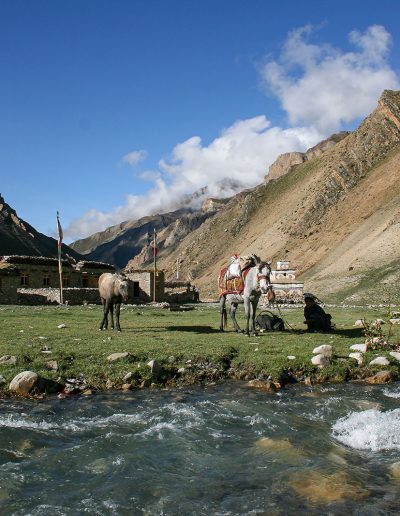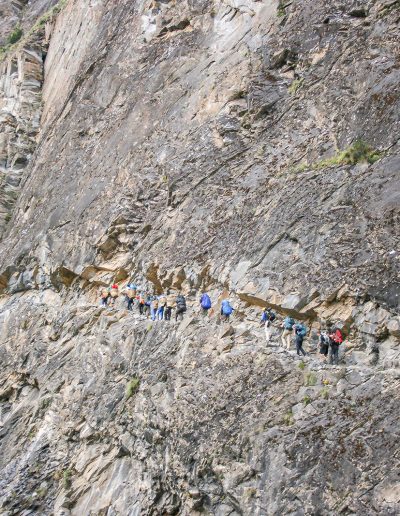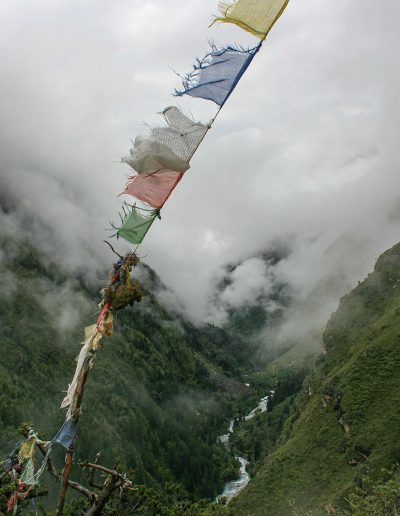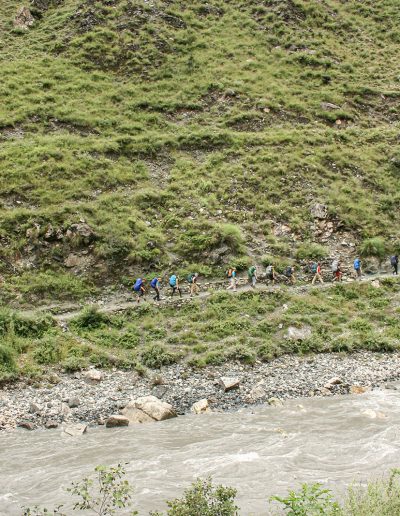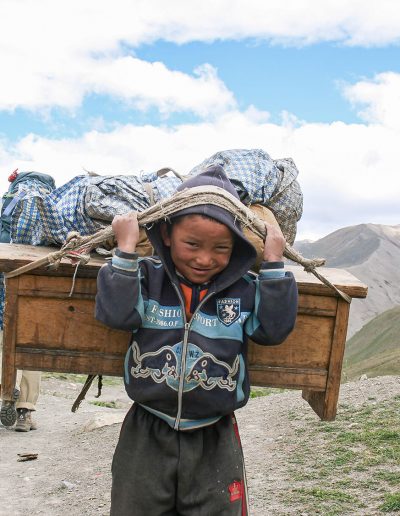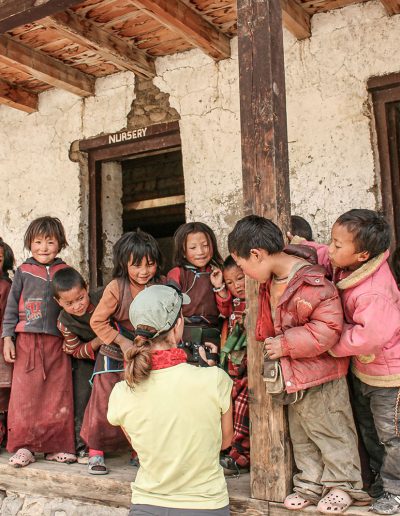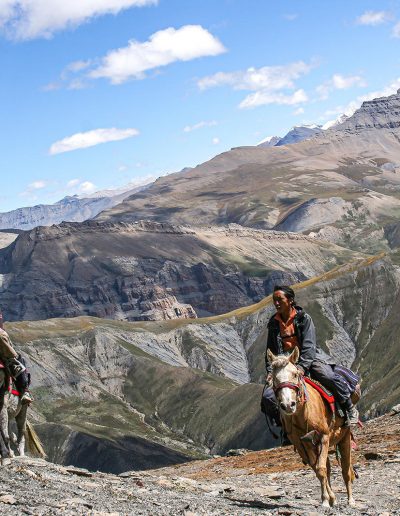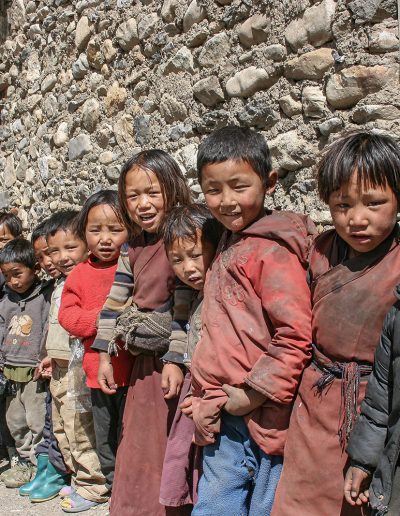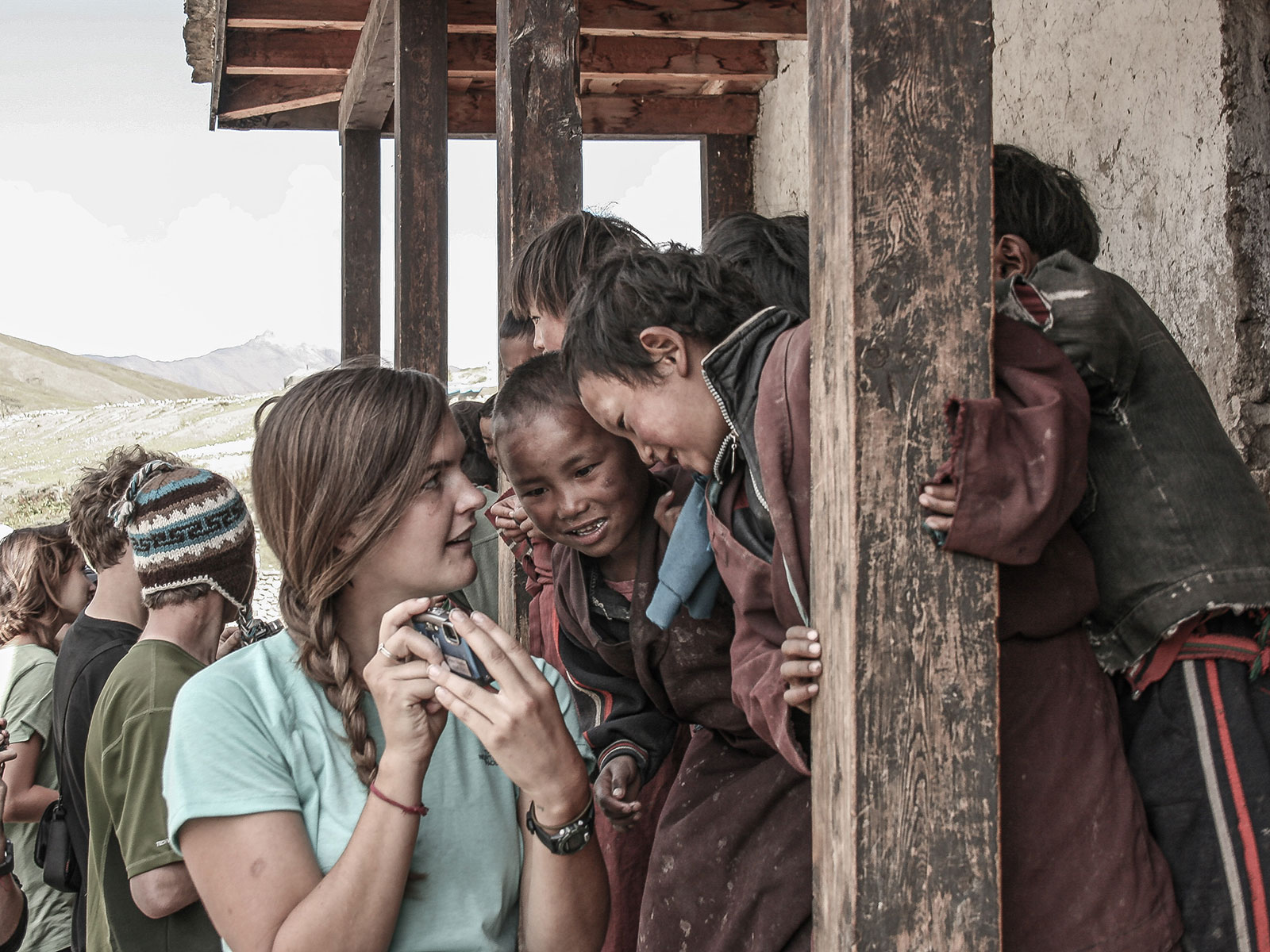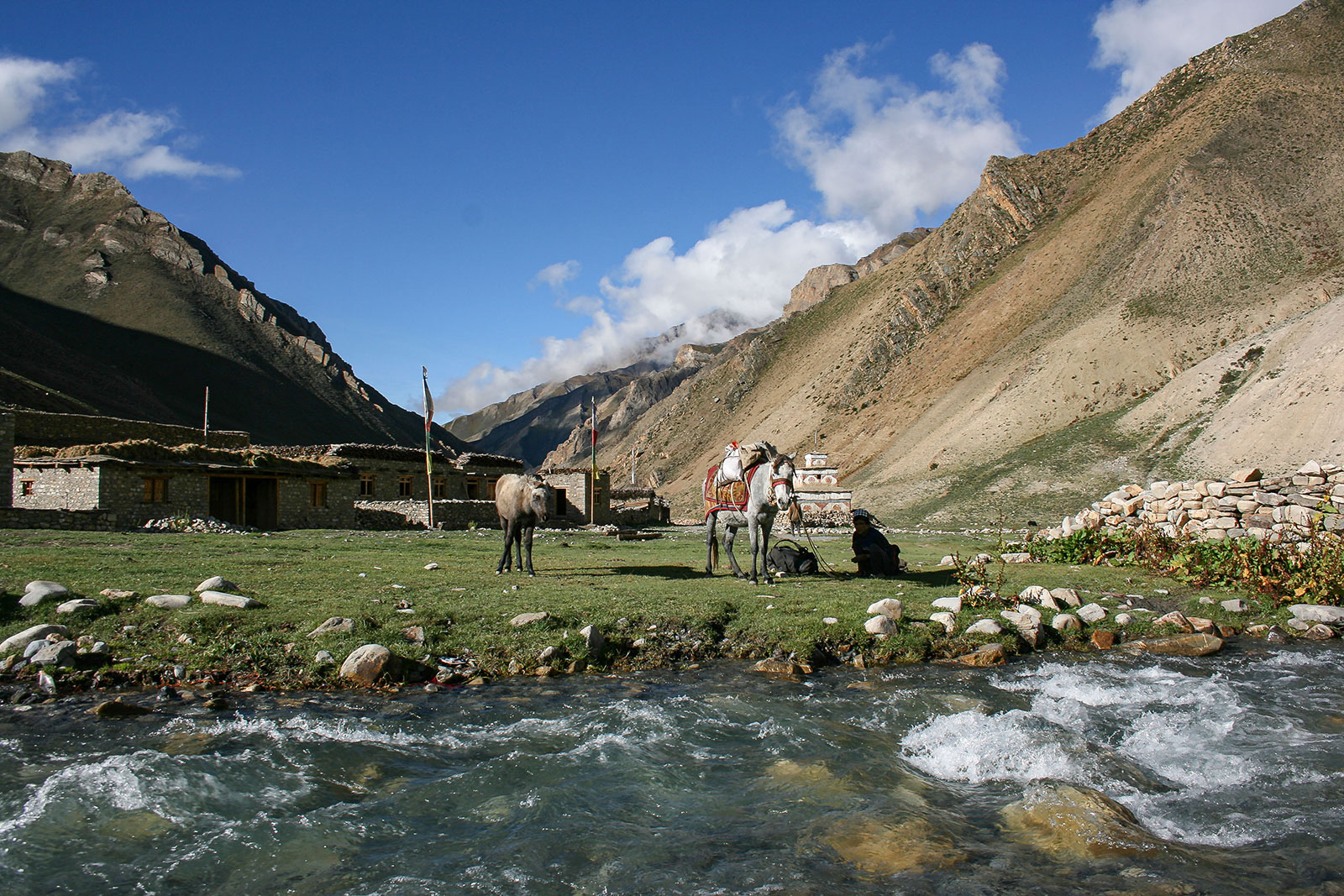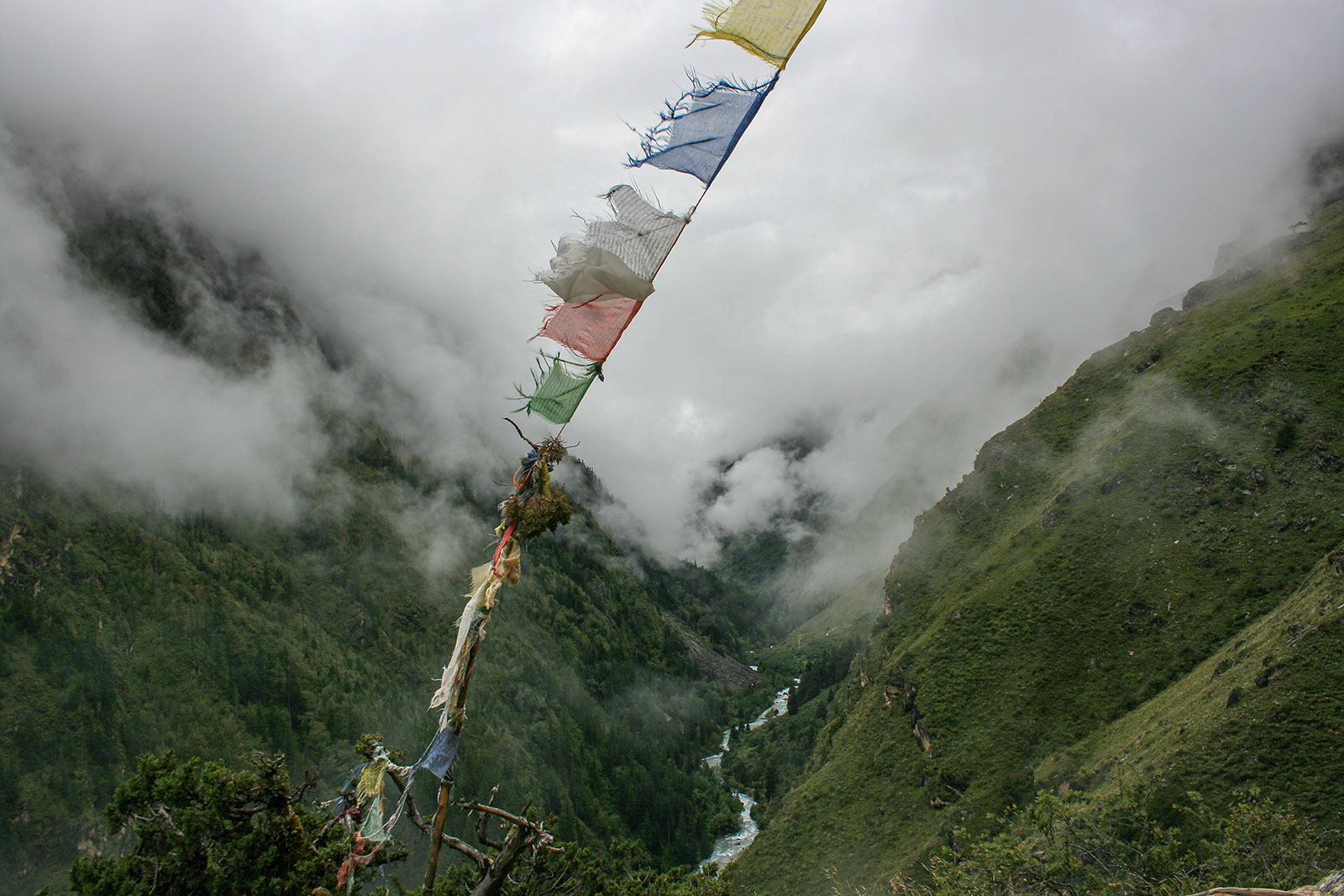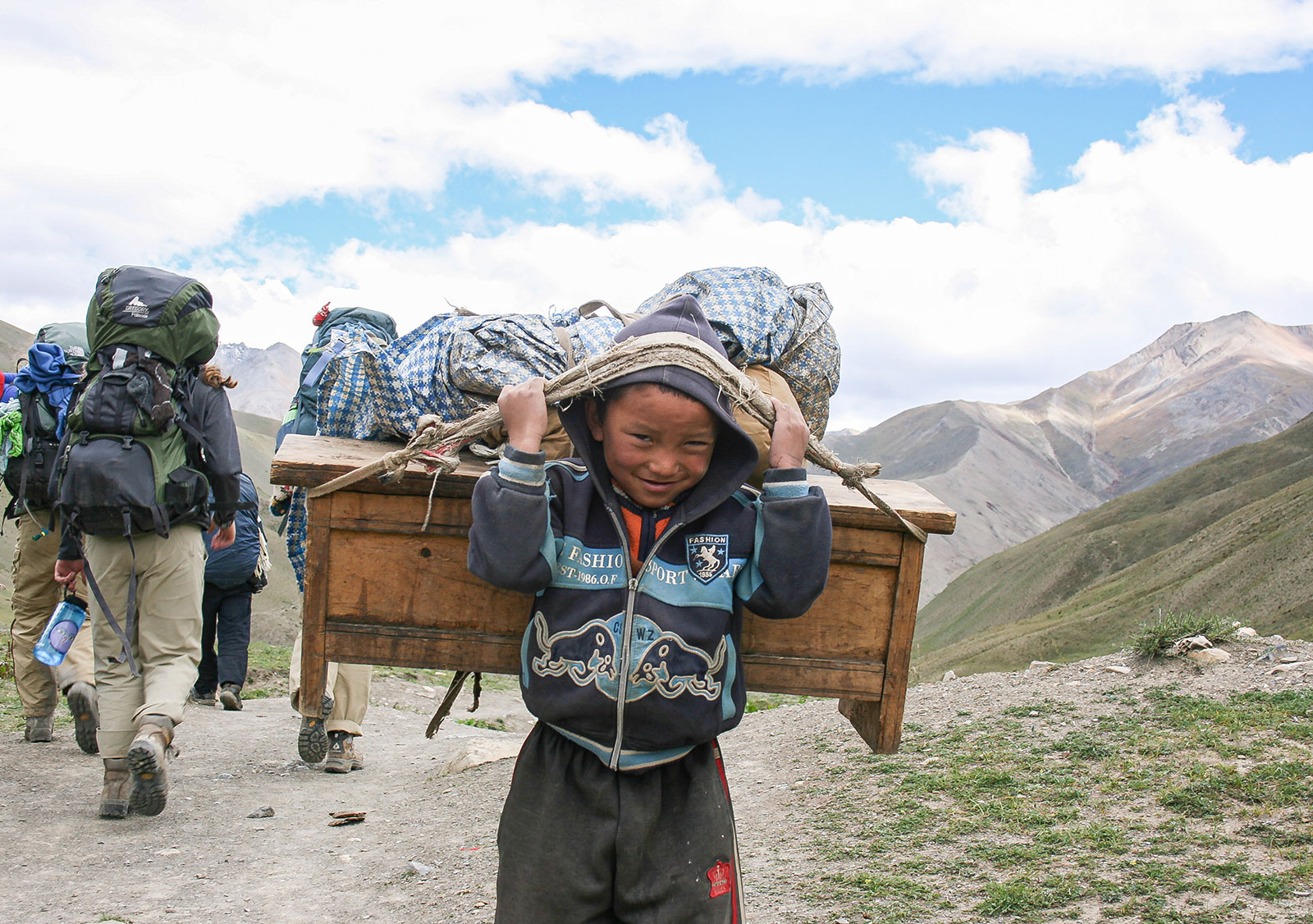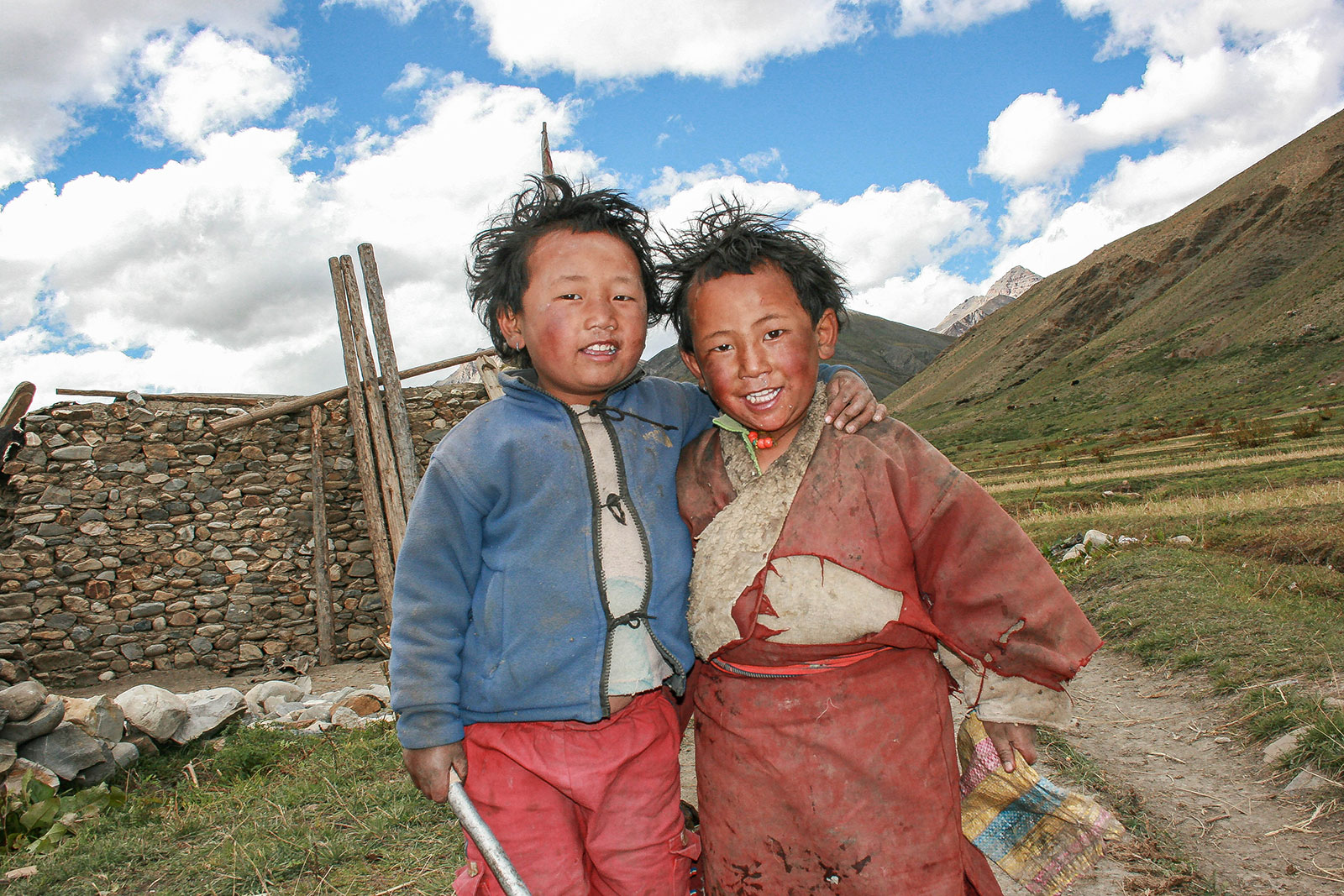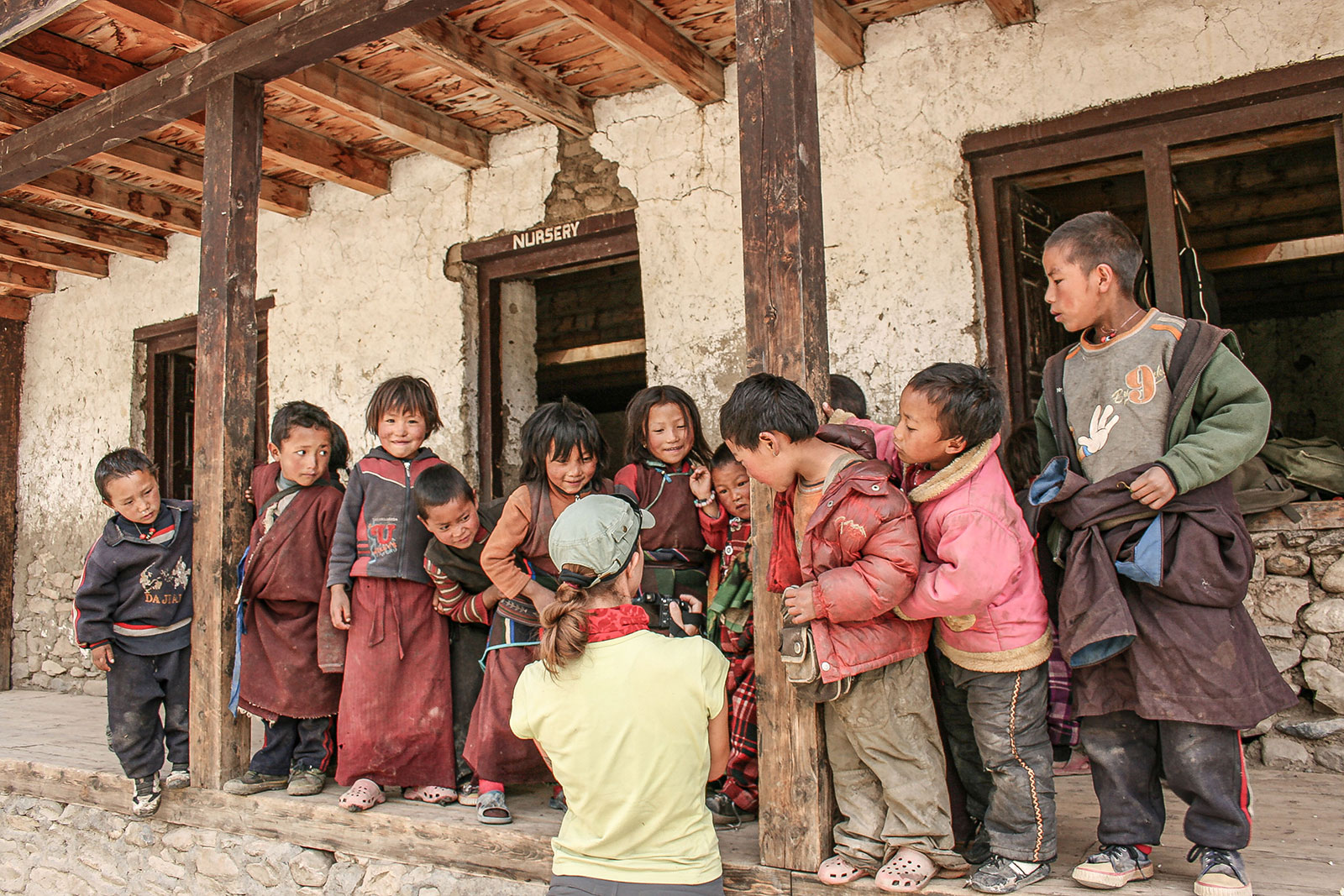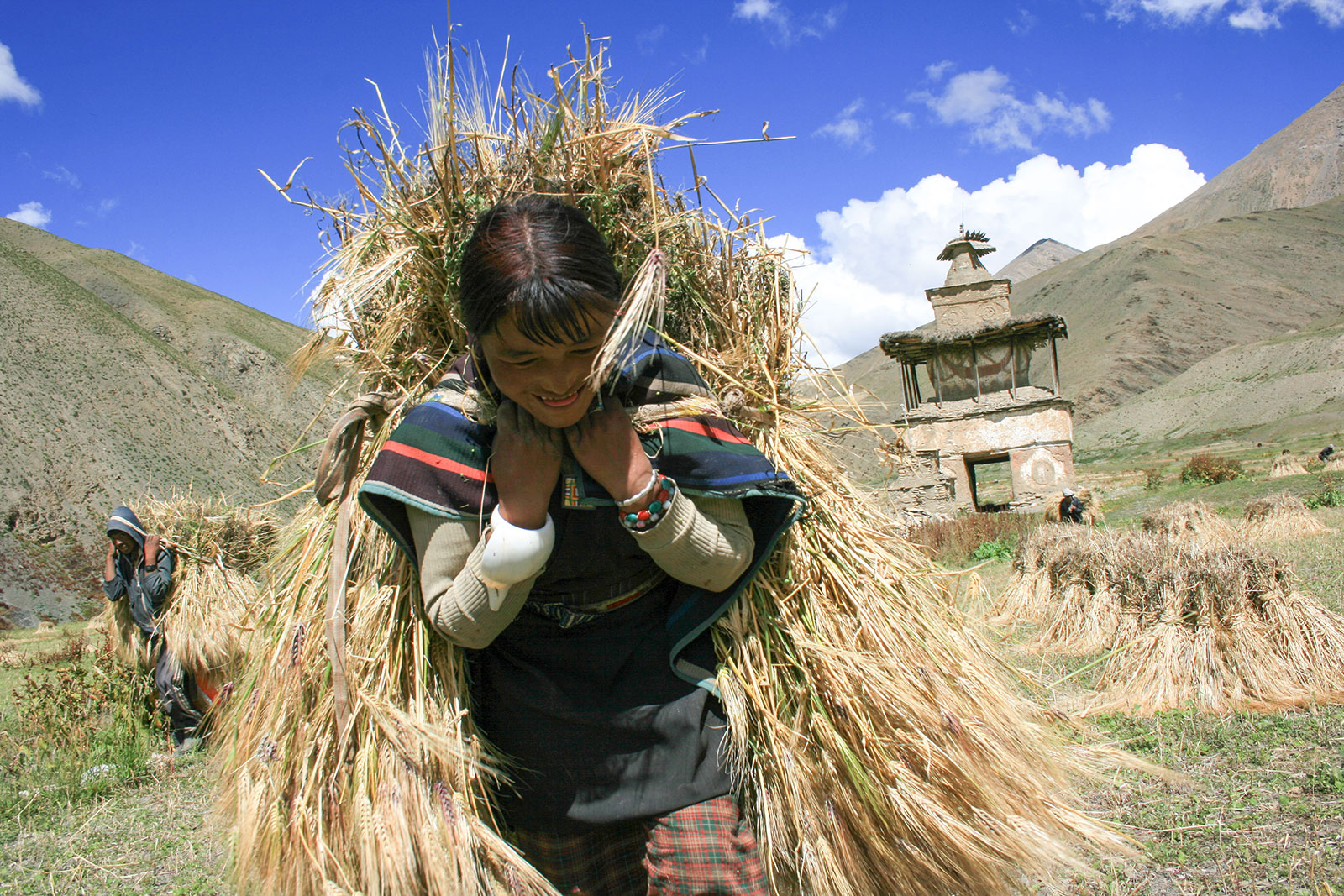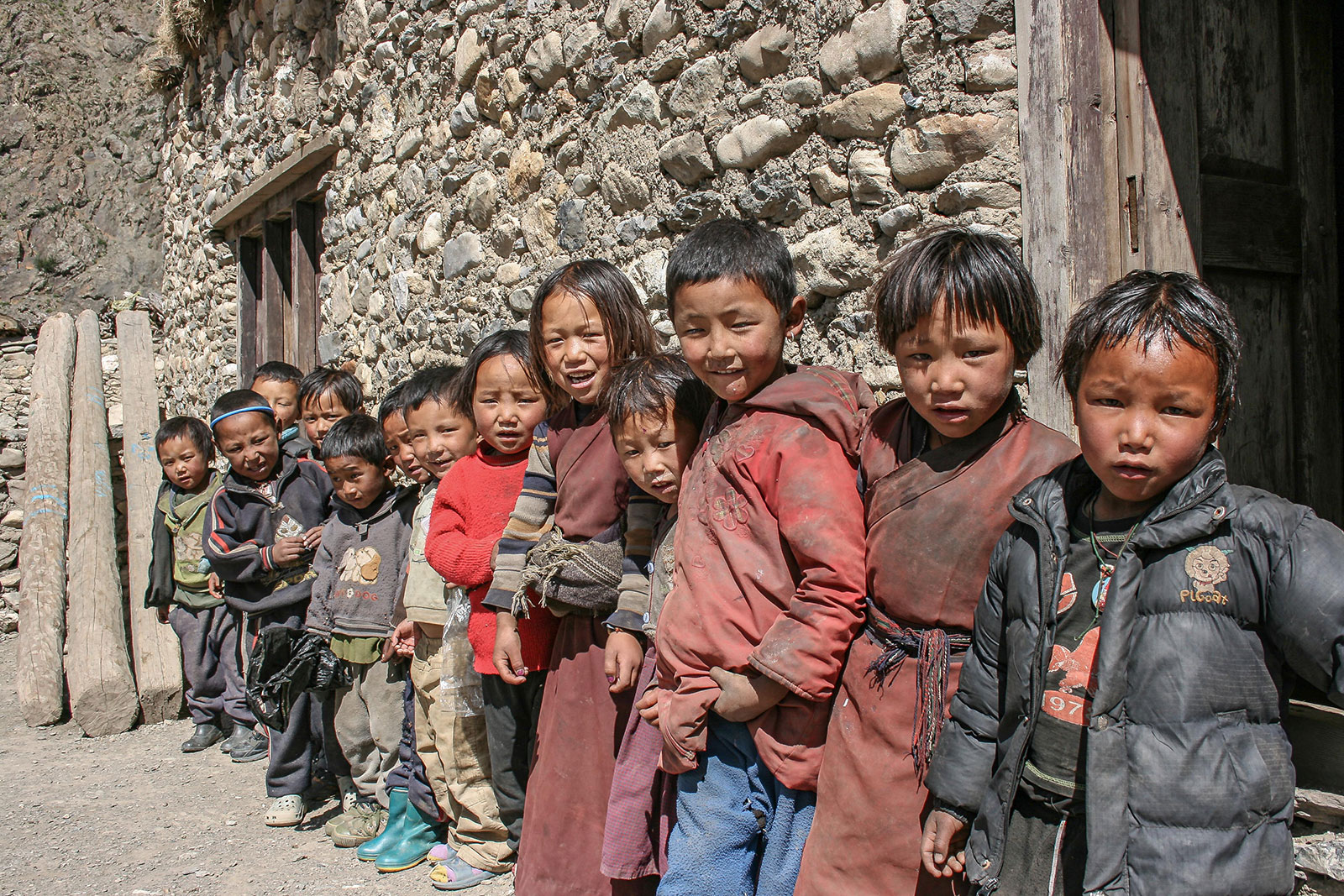Lower Dolpo Phoksundo Lake Trek
Lower Dolpo Phoksundo Lake Trek
DAYS
21
DIFFICULTY
Moderate/Strenuous
MAX ALTITUDE
5,318 M
ACCOMMODATION
Camping
DAYS
21
DIFFICULTY
Moderate/ Strenuous
MAX ALTITUDE
5318 M
ACCOMMODATION
Camping
Trip Overview
Dolpo is one of the most remote and spectacular corners of the Himalayas, isolated from the rest of Nepal by the mountain ranges of Dhaulagiri and Churen Himal. Lying in the rain shadow area of the Himalayas, this landscape resembles that of the Tibetan Plateau instead of the lush, green, monsoon watered hills found elsewhere in Nepal at comparative altitudes. Although Dolpo occupies 15% of Nepal, it is still one of the least explored regions of this country, since it only opened for trekkers in 1989. This area is also known by Tibetans as bae-yul, or the hidden land. It is the land of Tibetan Buddhism and the pre-Buddhist religion of Tibet, called Bon. The areas of Do-Tarap and Phoksundo Lake are home to beautiful landscapes and impressive monasteries.
A long walk up a steep, uninhabited river valley leads to an enclave of Tibetan tradition in a high isolated valley, where you can meet nomadic Tibetans and their grazing yaks. The Dolpo region is protected by Shey Phoksundo National Park and in this preserved ecosystem it is still possible to observe the wildlife that is close to extinction in other areas, such as blue sheep and the ever-elusive snow leopard.
Throughout this trek we will be sleeping in tents. Our group will consist of experienced and reliable staff, including a guide, cooks and porters to carry all the trekking gear, together with some pack animals. We can guarantee high quality camping equipment and a variety of healthy, hygienic and delicious food on this adventure.
This trek can be qualified as moderate, with some strenuous days and thus a reasonable level of fitness is required, as on our way from Do-Tarap to Phoksundo Lake we will be crossing two high mountain passes: Numa-la at 5318 meters and Baga-la at 5190 meters above sea level.
Day 1: Arrival in Nepal and passport to Himalayan Quests
Day 2: Trek briefing and preparation
Day 3: Fly from Kathmandu to Nepalgunj on the border of India. Overnight in a hotel in Nepalgunj.
Day 4: Fly Nepaljung to Jufal (2,400m). Trek to Dunai (2,150m), approx. 4 hours
Day 5: Trek to Tarkot (2,600m) approx. 5 hours
Day 6: Trek to Lahini (3,500m) approx. 8 hours
Day 7: Trek to Sim Sim Odhar (3,850m), approx. 8 hours
Day 8: Rest day at Sim Sim Odhar, with a possible acclimatisation day hike
Day 9: Trek to Do Tarap (4,040m) approx. 7 hours
Day 10: Rest day at Do Tarap, with a possible acclimatisation hike
Day 11: Trek to Tok-khyu High Camp (4,565m) approx. 5-6 hours
Day 12: Trek to Pelungtang (4,465m) over the Numa-la pass (5,318m), approx. 9 hours
Day 13: Trek to Dajok Tang (4,080m) over the Baga-la pass (5,190m), approx. 5-6 hours
Day 14: Trek to Phoksundo Lake (3,730m), approx. 3-4 hours
Day 15: Rest day at Phoksundo Lake
Day 16: Trek to Renje (3,010m), approx. 6-7 hours
Day 17: Trek to Chepka (2,670m), approx. 5-6 hours.
Day 18: Trek back to Dunai, approx. 6-7 hours
Day 19: Trek Chepka to Dunai (2,150m), approx. 6-7 hours.
Day 20: Dunai to Jufal (2,400) is a slow ascent back to where we started the trek, approx. 4-4 ½ hours
Day 21: Fly Juphal to Nepaljung and from Nepalgunj to Kathmandu on the same day
Notes:
The trek itinerary is a guide only and may be subject to change at short notice
In order to obtain your Dolpo restricted access permit, we need your original passport at least 2 working days before departure
Day 1: Arrival in Nepal and passport to Himalayan Quests
Day 2: Trek briefing and preparation
Day 3: Fly from Kathmandu to Nepalgunj on the border of India. Overnight in a hotel in Nepalgunj.
Day 4: In the morning we take a small plane from Nepaljung to Jufal (2,400m). After lunch, we trek along the River Bheri to Dunai (2,150m), approx. 3 hours. Camp in Dunai.
Day 5: We gradually ascend from Dunai to Tarkot (2,600m), approx. 5 hours.
Day 6: From Tarkot we continue to head up on a gradual ascent to Lahini (3,500), approx. 8 hours.
Day 7: Lahini to Simsim Odhar (3,850m) is a long day, approx. 8 hours.
Day 8: Today we take a rest day at Sim Sim Odhar, with possible acclimatisation hikes.
Day 9: From Sim Sim Odhar to Do Tarap (4,040m) we continue to gradually gain elevation, approx 4-5 hours.
Day 10: Rest day at Do Tarap, with possible acclimatisation hike. We can visit the village and small Buddhist monastery, on the outskirts of the village.
Day 11: Do Tarap to Tok-khyu High Camp (4,565m) is once again a gradual ascent, approx. 5-6 hours.
Day 12: Today we complete our first high pass and the highest point on the trek, taking us from Tok-khyu High Camp to Pelungtang (4,465m) over the Numa-la pass (5,318m), approx. 6-7 hours. From the pass, on a clear day, we will be able to see magnificent Himalayan views, including Dhaulagiri I. (8,167m).
Day 13: We will conquer our second high pass today, the Baga-la pass (5,190m) taking us from Pelungtang to Dajok Tang (4,080m), approx. 5-6 hours.
Day 14: As we continue our descent to Phoksundo Lake (3,730m) we are blessed by a shorter day, approx. 3-4 hours.
Day 15: Rest day at Phoksundo Lake with possible day hikes.
Day 16: Phoksundo Lake to Renje (3,010m) sees us walking mostly downhill, approx. 6-7 hours.
Day 17: Today is another long downhill day as we trek from Renje to Chepka (2,670m), approx. 5-6 hours.
Day 18: From Chepka we return back to Dunai (2,150m), approx. 6-7 hours.
Day 19: Dunai to Jufal (2,400m) is a slow ascent back to the start of our trek, where we will camp for one last night, approx. 4-4 ½ hours.
Day 20: In the morning we fly from Jufal back to Nepaljung and from Nepalgunj to Kathmandu on the same day.
Notes:
The trek itinerary is a guide only and may be subject to change at short notice
In order to obtain your Dolpo restricted access permit, we need your original passport at least 2 working days before departure
Himalayan Quests uses a layering system where different pieces of clothing are worn together or separately to achieve optimum body temperature control. The upper body garments listed here are either synthetic or merino wool garments that retain their insulating properties when wet, or nylon or Gore-Tex layers which help prevent heat loss by cutting wind, rain, and snow.
This is a guideline only
| UPPER BODY LAYERS | ||
| Equipment | Quantity | Comments |
| T-Shirts – walking | 2 | We recommend merino wool, Capilene or other synthetic fabric as they wick away the moisture and dry quickly. No cotton. |
| T-shirt – sleeping | 1 | This can be cotton |
| Base layers (ie thermal top) | 1 | Lightweight or mid-weight long-sleeved t-shirt of merino wool, polyester, Capilene, or Polartec power dry |
| Top insulating Layers | 1 | Mid-weight fleece that can be worn over other layers |
| Fleece Vest | 1 | |
| Rain jacket | 1 | |
| Down Jacket | 1 | |
| LOWER BODY LAYERS | ||
| Equipment | Quantity | Comments |
| Underwear | Sufficient for the trek (remember you can wash them) | |
| Thermal long johns/long underwear | 1 | |
| Trekking Trousers | 2 | Lightweight quick-dry trousers (no cotton). Zip offs are good |
| Evening/sleeping trousers | 1 optional | 1 pair of lightweight tracksuit bottoms (sweat pants) or yoga style trousers for evening wear and sleeping in. No jeans. |
| Hiking Shorts | 1 | If no zip-off trousers. Below the knee for ladies |
| Rain Pants | 1 | |
| FOOTWEAR | ||
| Equipment | Quantity | Comments |
| Day pack | 1 | Approx. 35ltrs. HQ will provide you with a duffle bag for your trekking gear |
| Sleeping bag with compression sack | 1 | Minimum 3 season |
| Sleeping bag liner | 1 | Optional |
| PACKS & BAGS | ||
| Equipment | Quantity | Comments |
| Hiking boots | 1 | Must be well worn and comfortable with ankle support |
| Socks | 3 | |
| Flip flops/Camp shoes | 1 | Lightweight for evening use |
| MISCELLANEOUS ITEMS | ||
| Equipment | Quantity | Comments |
| Water bottles | 2 | One liter each, Nalgene or Sig style or a bladder if preferred |
| Water purification drops | 1 | Cheap and easy to buy in Kathmandu (Piyus) |
| Lip Balm | 1 | With SPF factor |
| Sunscreen | 1 | We recommend SPF 30 or greater |
| Mosquito repellent | 1 | |
| Personal first aid kit | 1 | To include any prescribed medications |
| Sunglasses | 1 | |
| Bandana/Buff | 1 | Useful for a variety of purposes. |
| Flashlight /head torch | 1 | Head torch is best as it leaves your hands free + extra batteries |
| Travel towel | 1 | Lightweight and compact |
| Wash kit | Travel size items for the trek & eco friendly if possible | |
| Instant Hand Sanitizer | 1 | Alcohol-based for keeping hands clean |
| Sun hat | 1 | |
| Warm hat | 1 | |
| Gloves | 1 | |
| Trekking poles | Optional | |
| Trekking snacks | Good selection available in KTM | |
| Camera | With charger &/or extra batteries | |
| Toilet paper & rubbish bag | ||
| Book/journal | ||
| Pack of cards/travel game | 1 | For evening entertainment |
| Passport photos | Always useful and a must-have if you want a local sim card | |
| Photocopies of all your important documents | ||
| A great sense of humor & a positive attitude | Essential – don’t come without it!! | |
Your trek cost includes:
- Pre-trip advice and detailed information
- Expert trip leadership and motivated staff for the duration of the trek
- Airport transfers in Nepal (where applicable)
- 2 nights accommodation pre-trek & 1-night post-trek in Kathmandu
- 1-night accommodation pre or post-trek in Pokhara (where applicable)
- Transportation to and from trek start and finish for you and your trekking team (different budget options available)
- Basic teahouse/lodge/camping accommodation during the trek on a twin sharing basis
- During the trek all meals on a full board basis (breakfast, lunch, and dinner) to include tea/coffee during the meals, but excluding any drinks outside of the meal times
- All permits, conservation area, and restricted area fees
- Porters
- Insurance and equipment for Nepali staff
- Rescue assistance
- Group medical kit
Your trek cost does NOT include:
- International flights to and from Kathmandu, Nepal
- Visa for Nepal
- Travel insurance (insurance to include evacuation is mandatory. Please make sure you are covered to the correct altitude)
- Personal expenses such as fizzy drinks, chocolate, gifts, snacks, hot showers during the trek, etc.
- Meals unless specified
- Sightseeing
- Gratuities
- Excess baggage on internal flights
- Charges incurred as a result of delays beyond the control of Himalayan Quests
Day 1: Arrival in Nepal and passport to Himalayan Quests
Day 2: Trek briefing and preparation
Day 3: Fly from Kathmandu to Nepalgunj on the border of India. Overnight in a hotel in Nepalgunj.
Day 4: Fly Nepaljung to Jufal (2,400m). Trek to Dunai (2,150m), approx. 4 hours
Day 5: Trek to Tarkot (2,600m) approx. 5 hours
Day 6: Trek to Lahini (3,500m) approx. 8 hours
Day 7: Trek to Sim Sim Odhar (3,850m), approx. 8 hours
Day 8: Rest day at Sim Sim Odhar, with a possible acclimatisation day hike
Day 9: Trek to Do Tarap (4,040m) approx. 7 hours
Day 10: Rest day at Do Tarap, with a possible acclimatisation hike
Day 11: Trek to Tok-khyu High Camp (4,565m) approx. 5-6 hours
Day 12: Trek to Pelungtang (4,465m) over the Numa-la pass (5,318m), approx. 9 hours
Day 13: Trek to Dajok Tang (4,080m) over the Baga-la pass (5,190m), approx. 5-6 hours
Day 14: Trek to Phoksundo Lake (3,730m), approx. 3-4 hours
Day 15: Rest day at Phoksundo Lake
Day 16: Trek to Renje (3,010m), approx. 6-7 hours
Day 17: Trek to Chepka (2,670m), approx. 5-6 hours.
Day 18: Trek back to Dunai, approx. 6-7 hours
Day 19: Trek Chepka to Dunai (2,150m), approx. 6-7 hours.
Day 20: Dunai to Jufal (2,400) is a slow ascent back to where we started the trek, approx. 4-4 ½ hours
Day 21: Fly Juphal to Nepaljung and from Nepalgunj to Kathmandu on the same day
Notes:
The trek itinerary is a guide only and may be subject to change at short notice
In order to obtain your Dolpo restricted access permit, we need your original passport at least 2 working days before departure
Day 1: Arrival in Nepal and passport to Himalayan Quests
Day 2: Trek briefing and preparation
Day 3: Fly from Kathmandu to Nepalgunj on the border of India. Overnight in a hotel in Nepalgunj.
Day 4: In the morning we take a small plane from Nepaljung to Jufal (2,400m). After lunch, we trek along the River Bheri to Dunai (2,150m), approx. 3 hours. Camp in Dunai.
Day 5: We gradually ascend from Dunai to Tarkot (2,600m), approx. 5 hours.
Day 6: From Tarkot we continue to head up on a gradual ascent to Lahini (3,500), approx. 8 hours.
Day 7: Lahini to Simsim Odhar (3,850m) is a long day, approx. 8 hours.
Day 8: Today we take a rest day at Sim Sim Odhar, with possible acclimatisation hikes.
Day 9: From Sim Sim Odhar to Do Tarap (4,040m) we continue to gradually gain elevation, approx 4-5 hours.
Day 10: Rest day at Do Tarap, with possible acclimatisation hike. We can visit the village and small Buddhist monastery, on the outskirts of the village.
Day 11: Do Tarap to Tok-khyu High Camp (4,565m) is once again a gradual ascent, approx. 5-6 hours.
Day 12: Today we complete our first high pass and the highest point on the trek, taking us from Tok-khyu High Camp to Pelungtang (4,465m) over the Numa-la pass (5,318m), approx. 6-7 hours. From the pass, on a clear day, we will be able to see magnificent Himalayan views, including Dhaulagiri I. (8,167m).
Day 13: We will conquer our second high pass today, the Baga-la pass (5,190m) taking us from Pelungtang to Dajok Tang (4,080m), approx. 5-6 hours.
Day 14: As we continue our descent to Phoksundo Lake (3,730m) we are blessed by a shorter day, approx. 3-4 hours.
Day 15: Rest day at Phoksundo Lake with possible day hikes.
Day 16: Phoksundo Lake to Renje (3,010m) sees us walking mostly downhill, approx. 6-7 hours.
Day 17: Today is another long downhill day as we trek from Renje to Chepka (2,670m), approx. 5-6 hours.
Day 18: From Chepka we return back to Dunai (2,150m), approx. 6-7 hours.
Day 19: Dunai to Jufal (2,400m) is a slow ascent back to the start of our trek, where we will camp for one last night, approx. 4-4 ½ hours.
Day 20: In the morning we fly from Jufal back to Nepaljung and from Nepalgunj to Kathmandu on the same day.
Notes:
The trek itinerary is a guide only and may be subject to change at short notice
In order to obtain your Dolpo restricted access permit, we need your original passport at least 2 working days before departure
Trekking Gear List
Himalayan Quests uses a layering system where different pieces of clothing are worn together or separately to achieve optimum body temperature control. The upper body garments listed here are either synthetic or merino wool garments which retain their insulating properties when wet, or nylon or Gore-Tex layers which help prevent heat loss by cutting wind, rain and snow.
THIS IS A GUIDELINE ONLY
UPPER BODY LAYERS
- T Shirts – walking 2 Merino wool, Capilene or other synthetic, wicking fabric. No cotton
- T-shirt – sleeping 1 Can be cotton
- Base layers 1 Light weight or mid weight thermal long sleeved t-shirt
- Top insulating Layers 1 Mid weight fleece that can be worn over other layers
- Fleece Vest 1
- Rain jacket 1
- Down jacket 1
LOWER BODY LAYERS
- Underwear Sufficient for trek (remember you can wash them)
- Thermal long underwear 1
- Trekking Trousers 2 Lightweight quick dry trousers (no cotton). Zip-offs are good
- Hiking Shorts 1 If no zip-off trousers. Below the knee for ladies
- Rain Pants 1
PACKS & BAGS
- Day pack 1 35ltrs. HQ will provide you with a duffle bag for your trekking gear
- Sleeping bag & compression sack 1 Minimum 3 season
FOOTWEAR
- Hiking boots 1 Must be well worn and comfortable with ankle support
- Socks 3 or 4
- Flip flops/Camp shoes 1 Lightweight for evening use
MISCELLANEOUS ITEMS
- Water bottles 2 One litre each, Nalgene or Sig style or a bladder if preferred
- Water purification drops Cheap and easy to buy in Kathmandu (Piyus)
- Sunscreen We recommend SPF 30 or greater
- Lip Balm With SPF factor
- Personal first aid kit To include any prescribed medications
- Sunglasses
- Bandana/Buff
- Flash light /head torch Head torch is best as it leaves your hands free + extra batteries
- Travel towel Lightweight and compact
- Wash kit Travel size items for the trek & eco friendly if possible
- Hand Sanitizer Alcohol-based for keeping hands clean
- Sun hat
- Warm hat
- Gloves
- Trekking poles Optional, but advised if you have dodgy knees
- Toilet paper & rubbish bag
- Trekking snacks Good selection available in KTM
- Camera With charger &/or extra batteries
- Book/journal
- Pack of cards/travel game For evening entertainment
- Mosquito repellent
- Passport photos Always useful and a must have if you want a local sim card
- Photocopies of all your important documents
- A great sense of humour & positive attitude Essential – don’t come without it!! J
Much of the above equipment can be bought cheaply in Kathmandu. You do not need to spend a fortune on gear.
Your trek cost includes:
- Pre-trip advice and detailed information
- Expert trip leadership and motivated staff for the duration of the trek
- Airport transfers in Nepal (where applicable)
- 2 nights accommodation pre-trek & 1-night post-trek in Kathmandu
- 1-night accommodation pre or post-trek in Pokhara (where applicable)
- Transportation to and from trek start and finish for you and your trekking team (different budget options available)
- Basic teahouse/lodge/camping accommodation during the trek on a twin sharing basis
- During the trek all meals on a full board basis (breakfast, lunch, and dinner) to include tea/coffee during the meals, but excluding any drinks outside of the meal times
- All permits, conservation area, and restricted area fees
- Porters
- Insurance and equipment for Nepali staff
- Rescue assistance
- Group medical kit
Your trek cost does NOT include:
- International flights to and from Kathmandu, Nepal
- Visa for Nepal
- Travel insurance (insurance to include evacuation is mandatory. Please make sure you are covered to the correct altitude)
- Personal expenses such as fizzy drinks, chocolate, gifts, snacks, hot showers during the trek, etc.
- Meals unless specified
- Sightseeing
- Gratuities
- Excess baggage on internal flights
- Charges incurred as a result of delays beyond the control of Himalayan Quests
Similar Trips
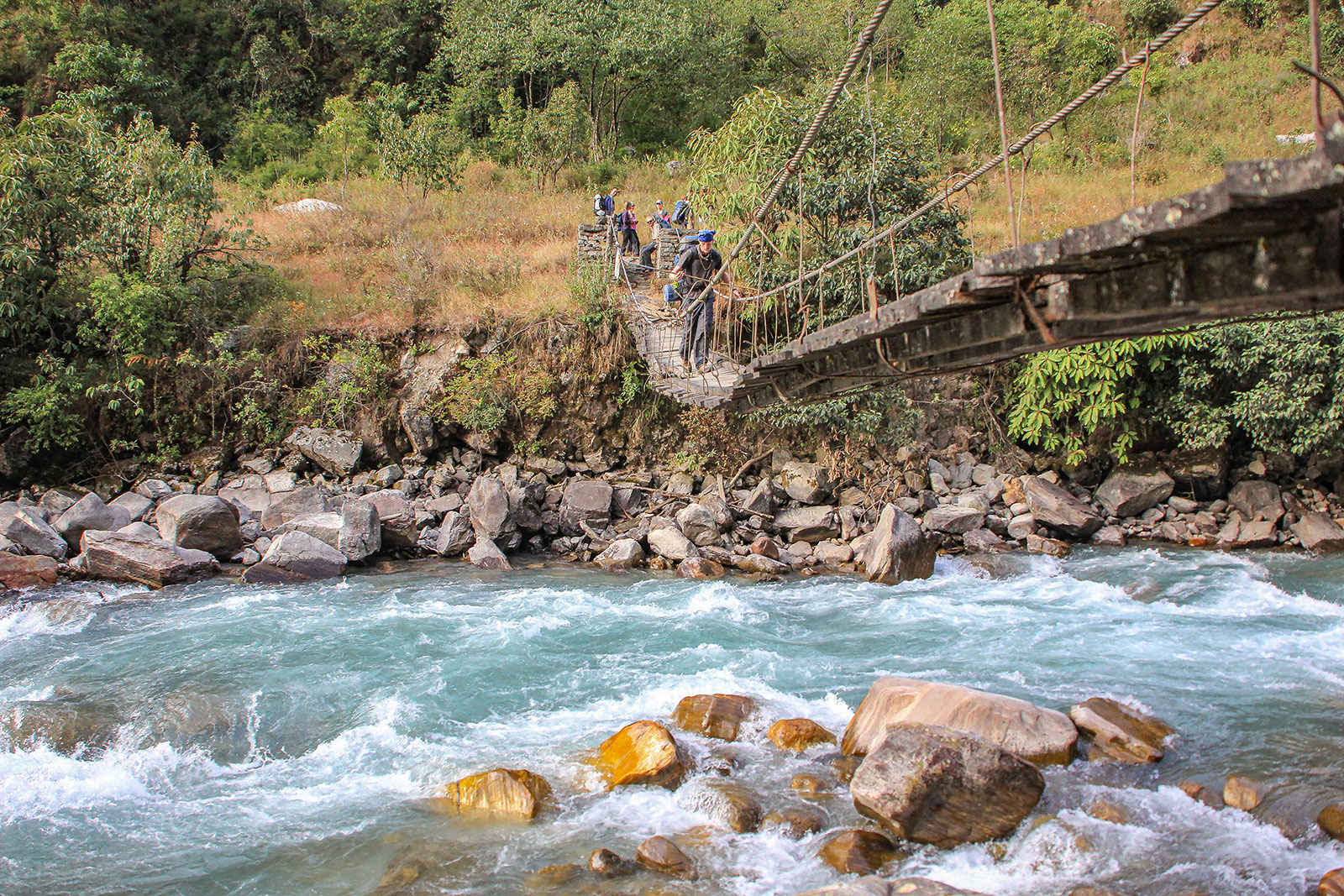
Kanchenjunga Base Camp Trek
26 Days
This circular trek takes you up through lush valleys full of seasonal flowers that receive the heaviest monsoon rains throughout the Himalayan range, north into spectacular high alpine landscapes full of woodlands and mountain streams.
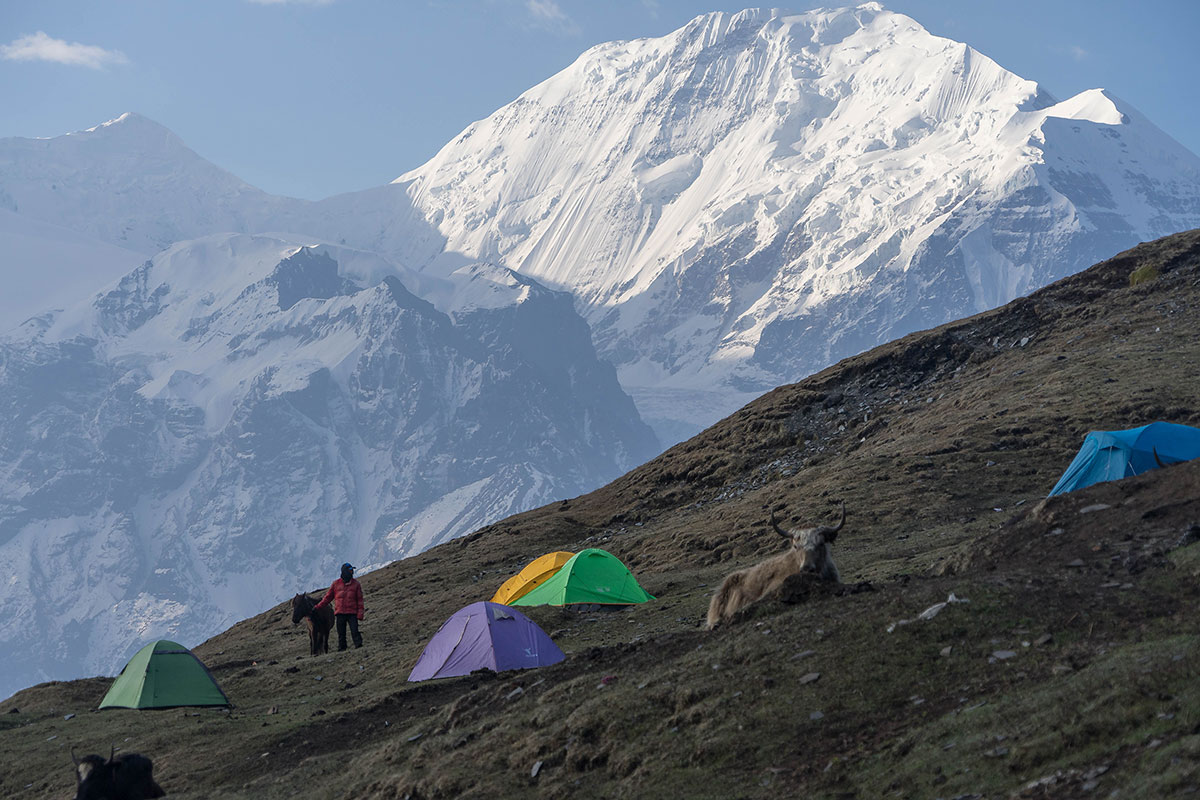
Nar Phu Annapurna Circuit Trek
17 Days
Trekking through remote villages steeped in Tibetan heritage and still following their ancient traditions of yak herding, harvesting wild herbs for medicinal purposes and trading across the Tibetan border it will be like stepping back in time.
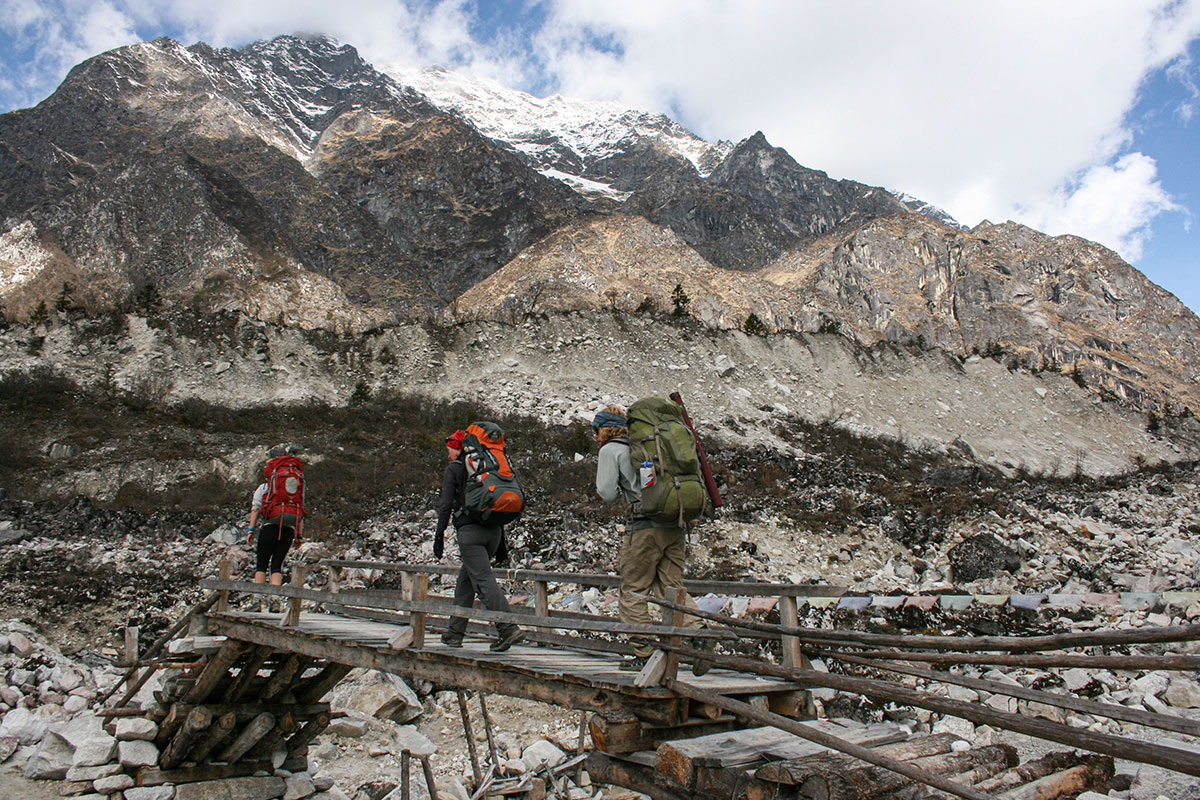
Tsum Valley Manaslu Circuit Trek
22 Days
Just as diverse as the ethnic population, so too the scenery varies from the lush, low elevation valleys growing rice and bananas, inhabited predominantly by the Hindu ethnic groups of Indo-Aryan origin, through rhododendron and bamboo forests, where you begin to encounter communities of Tibeto-Burmese origin who practice Hinduism, Buddhism or a mixture of both.

KANCHENJUNGA BASE CAMP TREK
26 Days
This circular trek takes you up through lush valleys full of seasonal flowers that receive the heaviest monsoon rains throughout the Himalayan range, north into spectacular high alpine landscapes full of woodlands and mountain streams.

NAR PHU ANNAPURNA CIRCUIT TREK
17 Days
Trekking through remote villages steeped in Tibetan heritage and still following their ancient traditions of yak herding, harvesting wild herbs for medicinal purposes and trading across the Tibetan border it will be like stepping back in time.

TSUM VALLEY MANASLU CIRCUIT TREK
22 Days
Just as diverse as the ethnic population, so too the scenery varies from the lush, low elevation valleys growing rice and bananas, inhabited predominantly by the Hindu ethnic groups of Indo-Aryan origin, through rhododendron and bamboo forests, where you begin to encounter communities of Tibeto-Burmese origin who practice Hinduism, Buddhism or a mixture of both.
CONTACT US
Let us help you plan the trip of your dreams
Address
GPO Box: 8974 CPC 437
Kathmandu, Nepal.
Nepal Govt. Registration
11881/424 1134/066
Phone
Our Team
Diaries
Featured Trips
Bespoke For You
CONTACT US
Let us help you plan the trip of your dreams
Address
GPO Box: 8974 CPC 437
Kathmandu, Nepal.
Nepal Govt. Registration
11881/424 1134/066
info@himalayanquests.com
Phone
+977 9849 141067

